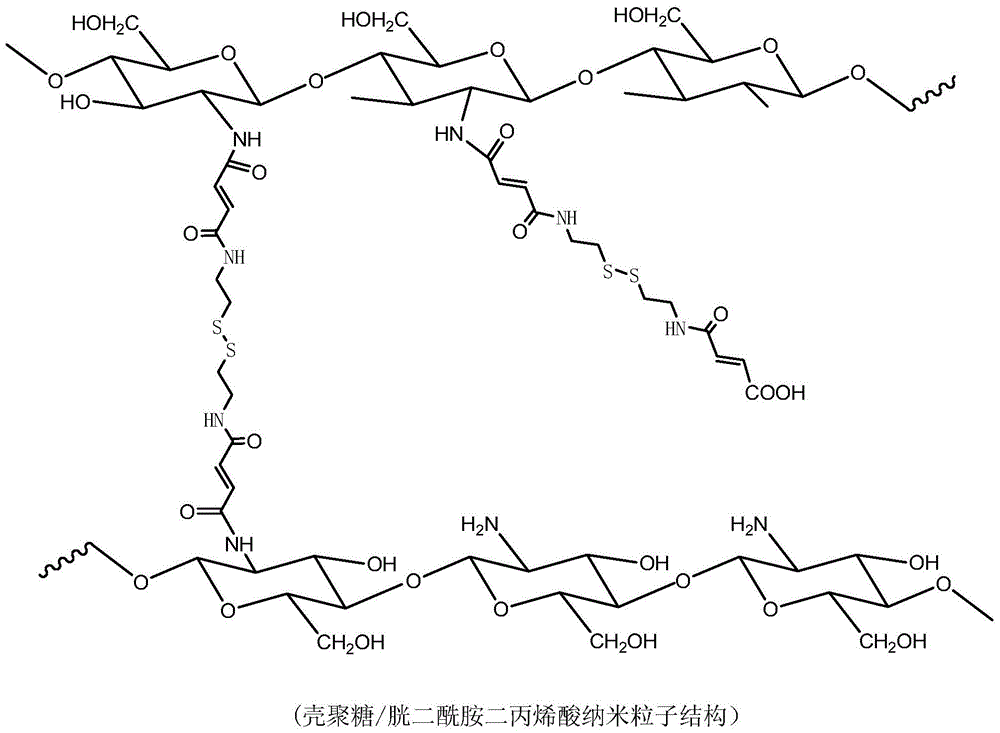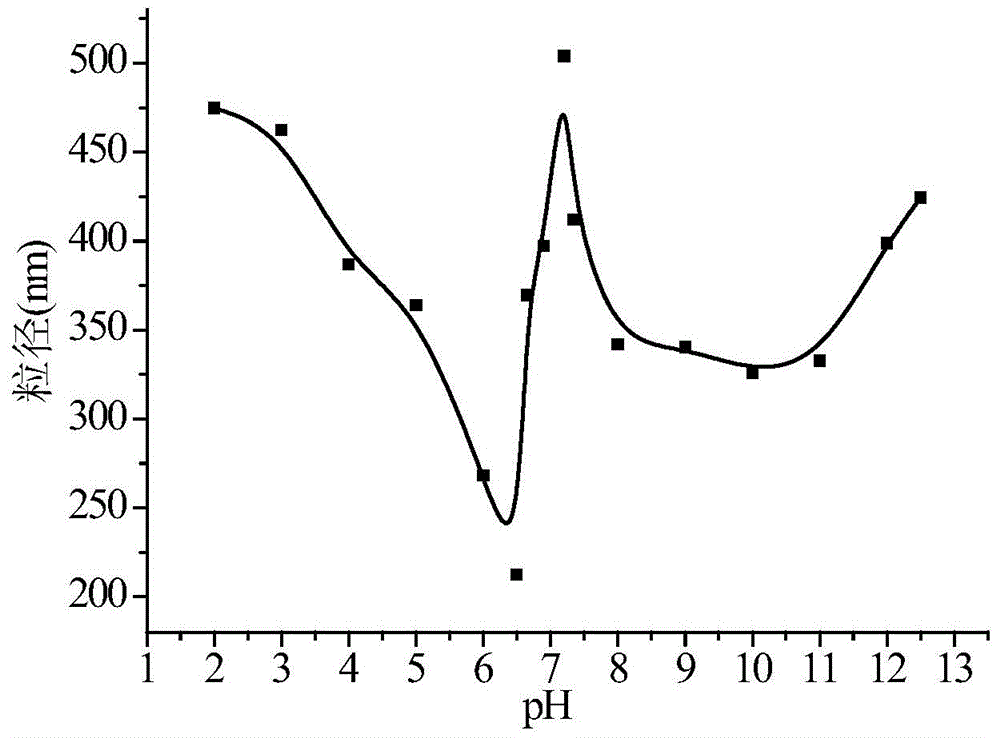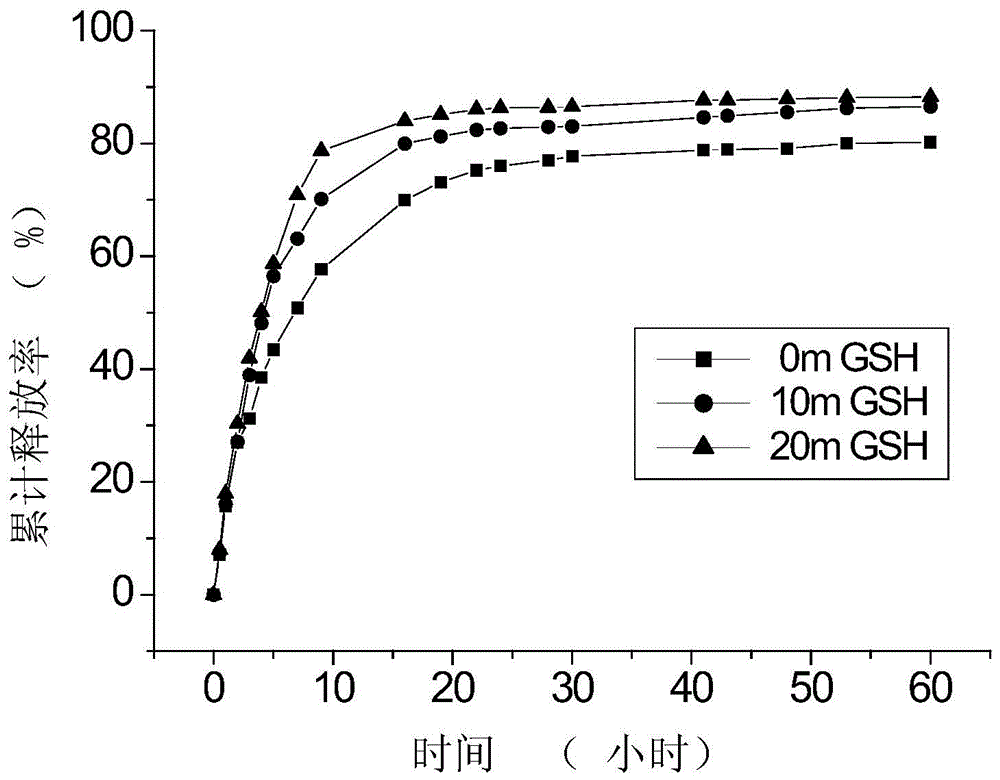A pH- and redox-sensitive nanoparticle
A technology of nanoparticles and cystamide diacrylic acid, which is applied in the direction of organic active ingredients, drug combination, powder delivery, etc., can solve the problems of low solubility, reduced activity, easy ring opening, etc., and achieve the effect of simple method and environmentally friendly process
- Summary
- Abstract
- Description
- Claims
- Application Information
AI Technical Summary
Problems solved by technology
Method used
Image
Examples
Embodiment 1
[0024] Preparation of cysteamide diacrylic acid:
[0025] Add 40mL of acetone and 4.83g (0.049mol) of maleic anhydride into a three-necked flask with a nitrogen protection device, raise the temperature to 50°C, and wait until the maleic anhydride is completely dissolved, then slowly add a solution of cystamine in acetone (3.02g Cystamine was dissolved in 10 mL of acetone), reacted for 2 hours and cooled to room temperature, the solution was filtered, the precipitate was washed three times with acetone to obtain a white powdery solid, and finally dried in a vacuum oven at 40°C for 12 hours to obtain cystamide diacrylic acid.
Embodiment 2
[0027] Preparation of pH- and redox-sensitive nanoparticles:
[0028] Weigh 100mg viscosity average molecular weight is 6.03×10 4 Chitosan was dispersed in 100mL distilled water, 120mg was added by the obtained cystamide diacrylic acid in Example 1, the pH value of the mixed solution was adjusted to 5 after magnetic stirring for 2h, and 328mg1-(3 -Dimethylaminopropyl)-3-ethylcarbodiimide hydrochloride and 320mg N-hydroxysuccinimide, react at 25°C for 24h, put the solution in a dialysis bag (MWCO=8000-14000) and put it in distilled water Medium dialysis for 5 days (the water was changed every 4 hours on the first day, and the water was changed every 8 hours on the next 4 days), and finally the nanoparticle solution CS-CDMA-120 was obtained.
Embodiment 3
[0030] Preparation and in vitro release characterization of pH- and redox-sensitive drug-loaded nanoparticles:
[0031] Weigh 10mg of camptothecin and dissolve it in an aqueous solution of pH=12, stir for 12h, add it dropwise to 50mL of the aqueous solution of nanoparticles with a concentration of 1mg / mL, pH=12, obtained in Example 2, stir for 2h and then use 0.1M Slowly adjust the pH to 5 with hydrochloric acid, stir for 2 hours and then centrifuge for 10 minutes (10,000 rpm) to take the supernatant to obtain a pure drug-loaded nanoparticle solution. Measure the drug-loading efficiency and encapsulation efficiency of the obtained drug-loaded nanoparticles, then take 5mL drug-loaded nanoparticle solution, and carry out the test in 50mL glutathione (GSH) concentration respectively in PBS with pH=7.4 of 0, 10mM, and 20mM. For in vitro release, take 3mL of release medium at regular intervals and measure the absorbance at 368nm on a UV spectrophotometer, calculate the concentratio...
PUM
 Login to View More
Login to View More Abstract
Description
Claims
Application Information
 Login to View More
Login to View More - R&D
- Intellectual Property
- Life Sciences
- Materials
- Tech Scout
- Unparalleled Data Quality
- Higher Quality Content
- 60% Fewer Hallucinations
Browse by: Latest US Patents, China's latest patents, Technical Efficacy Thesaurus, Application Domain, Technology Topic, Popular Technical Reports.
© 2025 PatSnap. All rights reserved.Legal|Privacy policy|Modern Slavery Act Transparency Statement|Sitemap|About US| Contact US: help@patsnap.com



